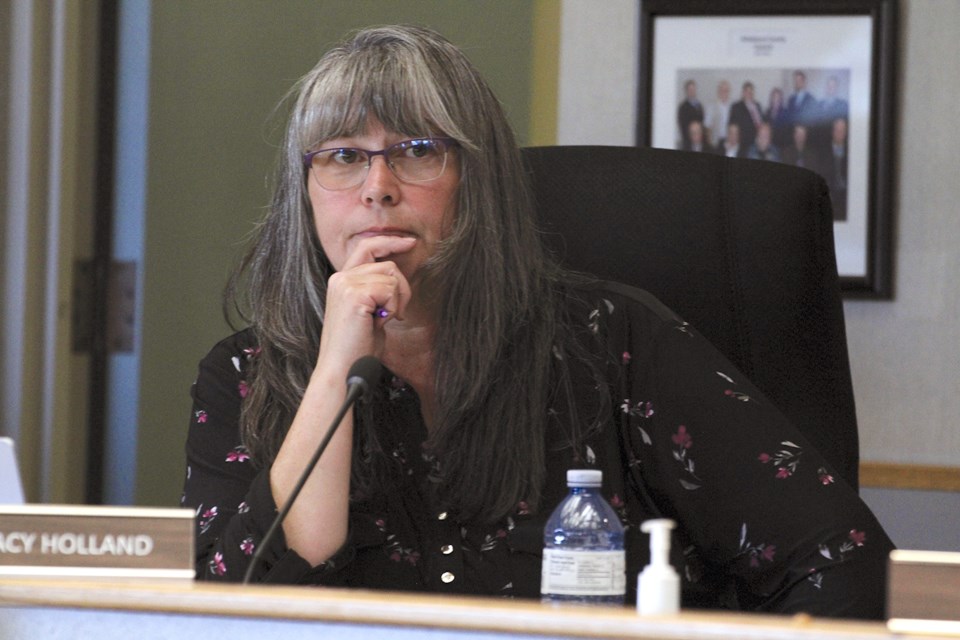ATHABASCA – Athabasca County councillors got their first look at a proposed bylaw that would better enable animal enforcement officers to deal with problem animals and their owners.
During their Jan. 16 committee of the whole meeting, councillors lauded the proposed changes, which added guidelines for live trapping of cats and dogs, animal limits, over-limit permits, and updated the potential penalties for owners.
“The county’s role is in part (is) to maintain safe and viable communities. It’s one of the five core purposes of a municipality,” said county Reeve Brian Hall “Taking an active role in helping to solve problems that relate to problem pets fits within that, and making our region a place where everyone feels safe is important. It’s in no one’s best interest for aggressive animals to be out and about or on the loose.”
Administration brought the proposal to council of their own volition. “It had been found that the current Dog Control Bylaw 004-2016 falls short in providing enforcement services the appropriate tools to deal with some of the many challenges that we are facing often,” read the request for a decision prepared by director of community and protective services Christa Wilkinson. Councillors were on board with many of the changes, although some felt there was more that could be included.
“I like to look at other municipalities, and one thing I noticed, and I didn’t see was basic care requirements, which is always a concern,” said Coun. Tracy Holland, who called the bylaw a “wonderful” start. “People call in and say, “Hey I can see my neighbour’s dog and they’re not being cared for.’ That’s one aspect I would like to see.”
Another proposed change would limit the number of dogs — excluding puppies under six months of age — that a person could have on their property. For residences larger than ten acres, the proposed bylaw would require no more than five dogs, while residences smaller than ten acres would have a maximum of three dogs. In the county’s hamlets, multi-lot subdivisions, and lake subdivision, no more than two dogs per residence would be permitted. In response to questions about a clause that would grandfather in existing residents, Wilkinson said it was a “tough” question.
“I knew this was going to come up,” said Wilkinson, whose team looked at a variety of different municipalities before presenting the proposed bylaw. “We already have some issues that this bylaw would help us with, so I don’t see grandfathering at all.”
Councillors will be discussing the proposed bylaw further at the Feb. 21 committee of the whole meeting, and councillors are expecting to have more to discuss at that date.
“Administration is looking to strengthen and improve the functionality of the bylaw, so the bylaw officers or peace officers have clear guidelines and clear mechanisms for problem animals,” said Hall. “This is about dealing with problems, not about interfering with things that are going well.”
Kennel options
Later in the meeting councillors discussed the possibility of using funding from the 2024 budget for pound services. While the county historically relied on third party organizations like Second Chance Animal Rescue Society (SCARS) or local vets for kennel spots, the increased demand for shelter space for stray animals has grown since COVID-19, and those solutions have been less consistent.
“In recent years, it has become more difficult to find placement for problem and homeless dogs and this has made enforcement challenging,” wrote Wilkinson in a second request for decision.
To accentuate her point, Wilkinson included a letter from a county resident who expressed concern about a pair of dogs they regularly interacted with. While the letter was redacted to protect the writer’s privacy, the details about the animals were left untouched.
“I have noticed the neighbours have two dogs that appear to be on shock collars to contain them in their perimeter,” wrote the concerned ratepayer, who said they worked as an aide for a youth. “I had felt uneasy about the animals, and their protective and aggressive posture and I had questioned how effective a shock collar would be if these dogs were ever to be motivated enough to cross the boundary.”
The letter’s author also noted the two dogs had been aggressive in the past and often sat and tracked the movements of people, including children getting off a school bus.
“You can’t fulfil your obligation to remove problem wildlife from the community if you don’t have a suitable place for (the animals) to go,” said Hall. “There are a number of rules around what has to happen with a pet that has been seized, and in order to comply we need a place for them to go.”
“This is an issue that in the past we’ve seen our residents speak and feel very passionately about, so it’s important that we give this the time it deserves and take all that into consideration as we move forward,” concluded Hall.



